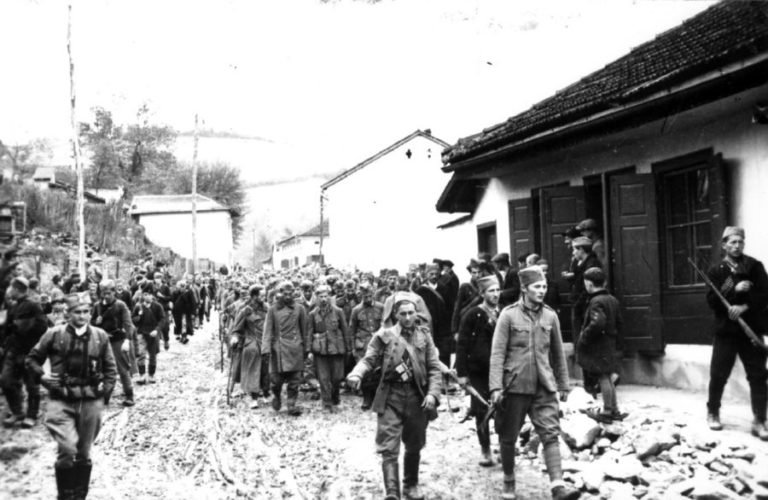The Kragujevac Massacre 1941| A Brutal Nazi Suppression at Yugoslavia

In the summer of 1941, Serbian guerrillas launched an uprising in central Serbia against the German occupation. The Serbian uprising spread and increased in intensity threatening the German military occupation of Serbia and endangering the German southern flank in Europe. The Serbian uprising came at the time of the German invasion of the USSR. Adolf Hitler immediately perceived the danger that the Serbian insurrection posed to the stability of the Balkans region and for German control. Swift action was taken. Hitler ordered that brutal measures be taken to suppress the Serbian revolt. Hitler ordered that the rebellion be quelled “by the most rigorous methods”. Pursuant to the instructions, Wilhelm Keitel ordered that for every German occupation soldier killed in Serbia, a hundred Serbian civilians would be executed, while fifty Serbian civilians would be killed for every wounded German soldier. This unprecedented order, that 100 Serbs would be shot for every German soldier killed, was given to quell the Serbian insurgency. This order would result in one of the most brutal massacres of civilians during World War II, the Kragujevac Massacre when an estimated 5,000 Serbian civilians were executed.
Serbia was a hotbed of opposition and resistance to the Nazi New Order in Europe. The first organized resistance movement in Europe was launched in Serbia under the command of Serbian Colonel Draza Mihailovic at Ravna Gora. By the summer of 1941, the first major popular uprising to German occupation occurred in Serbia. Hitler was appalled at this unprecedented act of defiance to the New Order in Europe. To terrorize the Serbian population and resistance, Hitler ordered that Serbian civilians be rounded up and executed as reprisals for Serbian resistance. Thousands of Serbian civilians would be executed. One of the most brutal acts of reprisal occurred in the central Serbian town of Kragujevac, where to fulfil the hundred to one quota, thousands of civilians were killed. The Kragujevac Massacre became one of the most notorious and tragic events of World War II. Like the massacres at Lidice, Babi Yar, Oradour, and Nanking, Kragujevac symbolized the horrors of war and occupation and the cost of resistance to military occupation.
The central Serbian town of Kragujevac had a pre-war population of 27,249, located in the political, cultural, educational, and industrial centre of Serbia known as Shumadija at the Lepenica river, a tributary of the Morava. Kragujevac was first mentioned in the Turkish Tapu Defter as Kragujevdza in 1476 as a village with 32 houses. By 1822, it had 283 houses with a population of 2,000. Kragujevac was the capital of the Serbian Principality when Milos Obrenovic proclaimed it the capital from 1818 to 1839. The first Serbian court was established in Kragujevac in 1820, the first high school in 1833, the first theatre in 1835, the first Lycee in 1838, the first cannons in 1853, and the first electric power station in 1884. By 1851, the town had become the industrial centre of Serbia. In 1853, the oldest Serbian military plant was established with French assistance to produce cannons. The military technical institute (Vojno Tehnicki Zavod) was established in Kragujevac which oversaw Serbian military armaments and weapons production. In 1929, a railroad line between Kragujevac and Kraljevo was established. The town produced military vehicles. Ford trucks were built in the late 1930s for the Yugoslav army.
On October 15, Mihailovic’s forces captured a German platoon. The next day, the commander of the 920th German regiment in Kragujevac sent his third battalion to free the platoon. This rescue regiment was ambushed by both Mihailovic’s and Tito’s forces. Ten German soldiers were killed and 26 wounded. On October 19, 300 civilians were executed in three surrounding villages in retaliation or as reprisals. All roads leading out of Kragujevac were blocked. All houses were searched. All males between 16 and 60 were taken to district military headquarters for identification, then to huts overlooking the town. Civil servants were rounded up from offices and 300 students over 16 were taken from the high school along with 18 teachers. The roundup continued into the afternoon. 100 were shot on October 20. 10,000 were assembled. On October 20, 2,300 were executed according to the official German report by Boehme. Laza Pantelic, the headmaster of the First Boys High School was shot. When he observed 35 of his students being led away to execution, he asked the German soldier: “Where are they being taken?” “To be shot” answered the German soldier. “I’m their headmaster. Let them go, and take me instead.” “That’s impossible”, replied the German soldier. “My place is not here—it’s with my boys.” He joined the students where they embraced and faced the firing squad together. “Shoot, I am still in class.” The students from the Kragujevac high school were reported to have said: “We are Serbian children. Shoot.” The Germans reportedly spared a few hundred townsmen so that the horror could be spread to terrorize the population. Approximately 600 were kept at the execution site in Shumarica where they buried the dead for the next 4 days. The bodies were buried in shallow graves, which allowed dogs unearthed the bodies and ate them. The graves were later marked by Serbian Orthodox crosses which the Communist regime later had removed.
An announcement from the local German command office in Kragujevac on October 21, 1941, was as follows:
For every dead German soldier, 100 residents have been executed, and for every wounded German soldier, 50 residents have been executed, and before all others, Communists, bandits, and their assistants were targeted, all totalling 2,300.



















